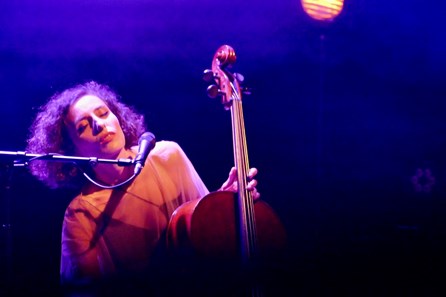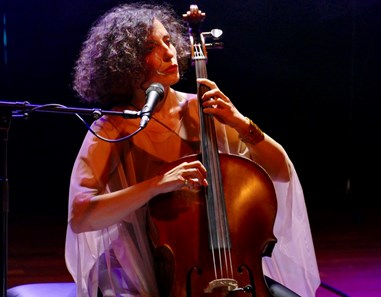Sanem Kalfa’s Festival residence at North Sea Round Town Rotterdam - Part one
a pure tour of lure…

Artists in residence usually give a few concerts at jazz festivals with different line-ups, also due to the short duration of many festivals. Eleven concerts however during a 14-day period of the festival, all with different line-ups, at different locations, that’s some different stuff and undoubtedly extraordinary: a challenge of one of a kind. It boils down to giving another type of concert almost every day/night.
Which contrasts rule, what is the range of the different kinds and how the artist’s identity emerges, is manifested through it? It should all be considered connected to the shape, reach, ambition and components of the festival as a whole. This will be about one artist’s residence reflected in the context of community based festival with its 350 concerts.
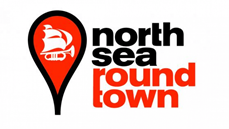
North Sea Round Town Festival
NSRT festival has no own location but spreads widely across the urban waters of Rotterdam, immerse in the different neighbourhoods, subcultures, disciplines and ethnic varieties with its concerts. Part of the festival ’s profile are its purposefully developed special creation projects meant as support and pushing forward the artists’ grow.
The prominent projects are connected to notable locations in Rotterdam’s urban space. It started in 2019 with a whole office floor at the 37th floor of Rotterdam’s biggest office tower next to the suspension Erasmus Bridge across the Maas. In 2021 it was the Laurenskerk and in 2022 it took place at Tropicana, a former swimming paradise and at Laurenskerk.
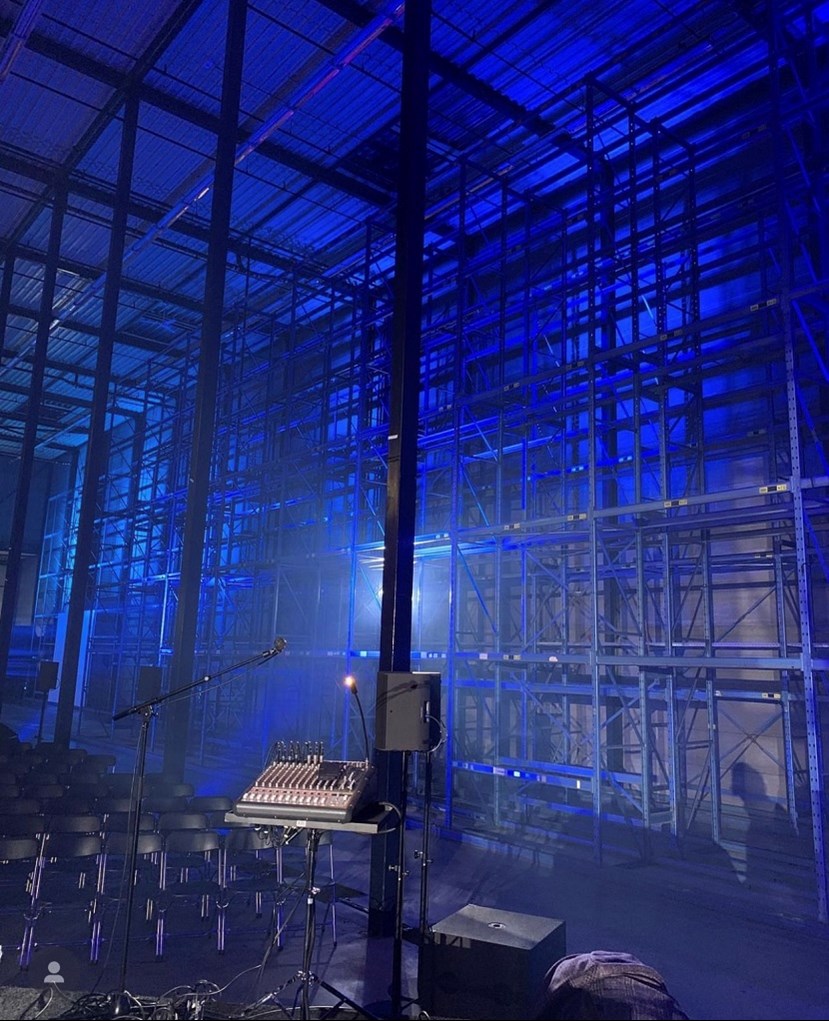
Van Nelle factory
This year it were two locations, a former Margarine factory and the Van Nelle factory, all large spaces.
Kalfa’s path through Rotterdam urban space
Kalfa played 13 concerts in 14 days, 2 of them outside NSRT festival, a rooftop concert in Amsterdam and a concert at Rotterdam’s commercial North Sea Jazz Festival, the world’s biggest indoor jazz festival. She criss-crossed the urban space of Rotterdam playing at 10 locations.
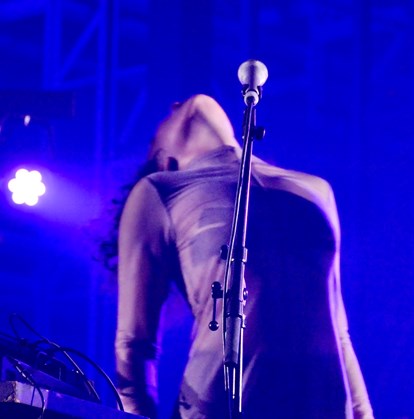
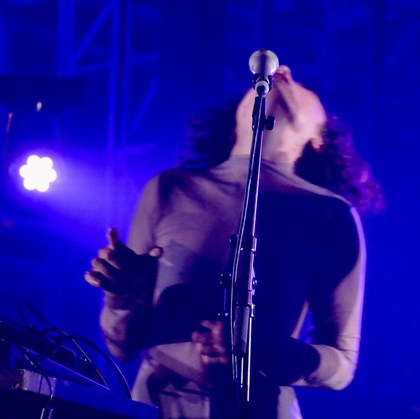
Her program departed from a farm at the outskirts of Rotterdam (Driebergen at the Schie river where Kalfa had a three-days lab with two dancers, Alice de Maio and Kelly Bigirindavyi, and cellist/sound artist Lucija Gregov) to Amsterdam BIMhuis (Miraculous Layers) and from there back to a huge factory hall in Rotterdam, the Van Nelle Factory (Invisible Columns) a New Objectivity style Unesco monument of glass and steel of the 1930s that was transformed to a musical dome. Next morning Kalfa had to move to an intimate smaller church in the southern Rotterdam borough Charlois (Oude Kerk) (Teis Semey’s Midnite Mess) and from there for the afternoon programme back to the farm at the Schie river on the outskirts of town (duo w/Tineke Postma).
After a one day break, the journey continued with a duo in the majestic Laurenskerk where Kalfa played together with Hayo Boerema, the organist of the church. Next stop: experimental club WORM (Televizyon) round the corner and then two days to a creative workplace, Batavierhuis (Northsea String Quartet), and to a defunct, ’culturized’ industrial place, De Machinist (duo w/ trumpeter Peter Somuah).
Next day after De Machinist there was another detour to a private duo-concert with guitarist Teis Semey on a rooftop (near Amsterdam Central Station) to return to Rotterdam next morning for rehearsals of a new program that was performed in the afternoon at Old Catholic Church in the centre of Rotterdam (duo w/George Dumitriu). After a several-days break there was a solo-concert at the Depot Boijmans van Beuningen Museum (opened for the public in 2021), Kalfa’s final concert at NSRT.
Directly after it she went through to another venue in Rotterdam, Ahoy, place of the three-days Northsea Jazzfestival, where she performed as part of Ensemble Grande of Fuensanta Mendez.
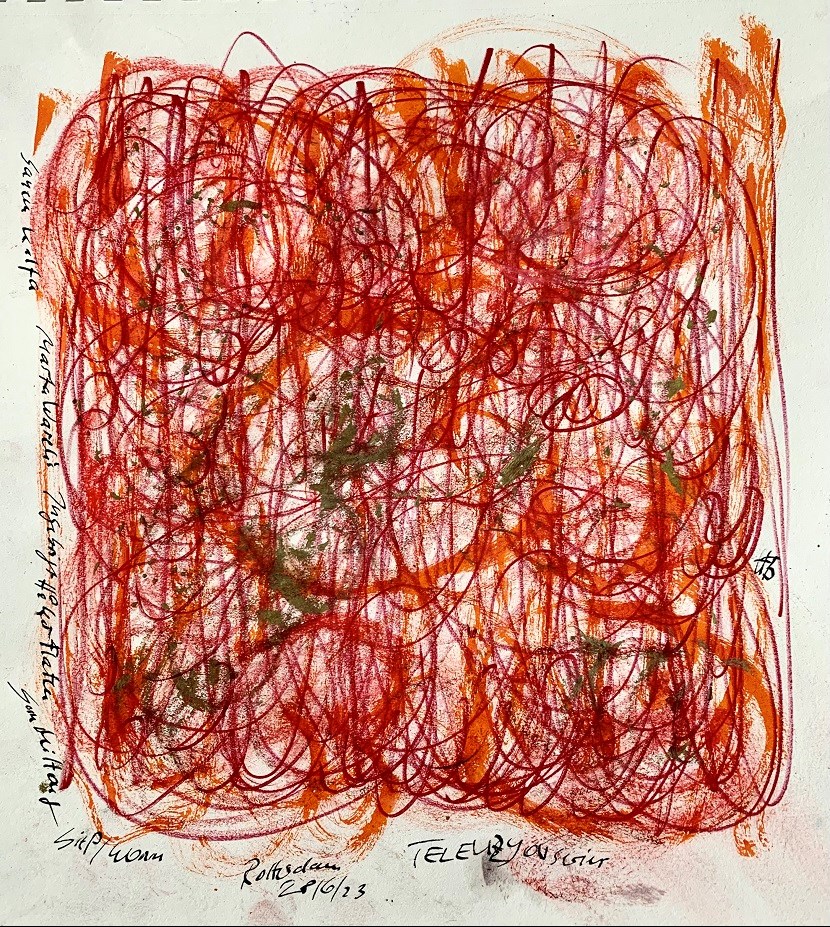
When reading this, you may first need some rest to digest both varieties: that of the locations and that of the performing configurations most with Sanem Kalfa as central figure. There were three ensembles of her own: MIRACULOUS LAYERS, TELEVIZYON and INVISIBLE COLUMNS. There was a series of duos, some of them longer-standing duo units as those with George Dumitriu, Teis Semey and Tineke Postma and ad hoc combinations as those with Peter Somuah and Hajo Boerema. Kalfa also performed as part of Teis Semey’s Midnight Mess Ensemble (as one of the four vocalists) and as guest of the Northsea String Quartet.
Kalfa’s own ensembles
Three ensembles of Sanem Kalfa made their appearance during the festival: Invisible Columns, Miraculous Layers and Televizyon.
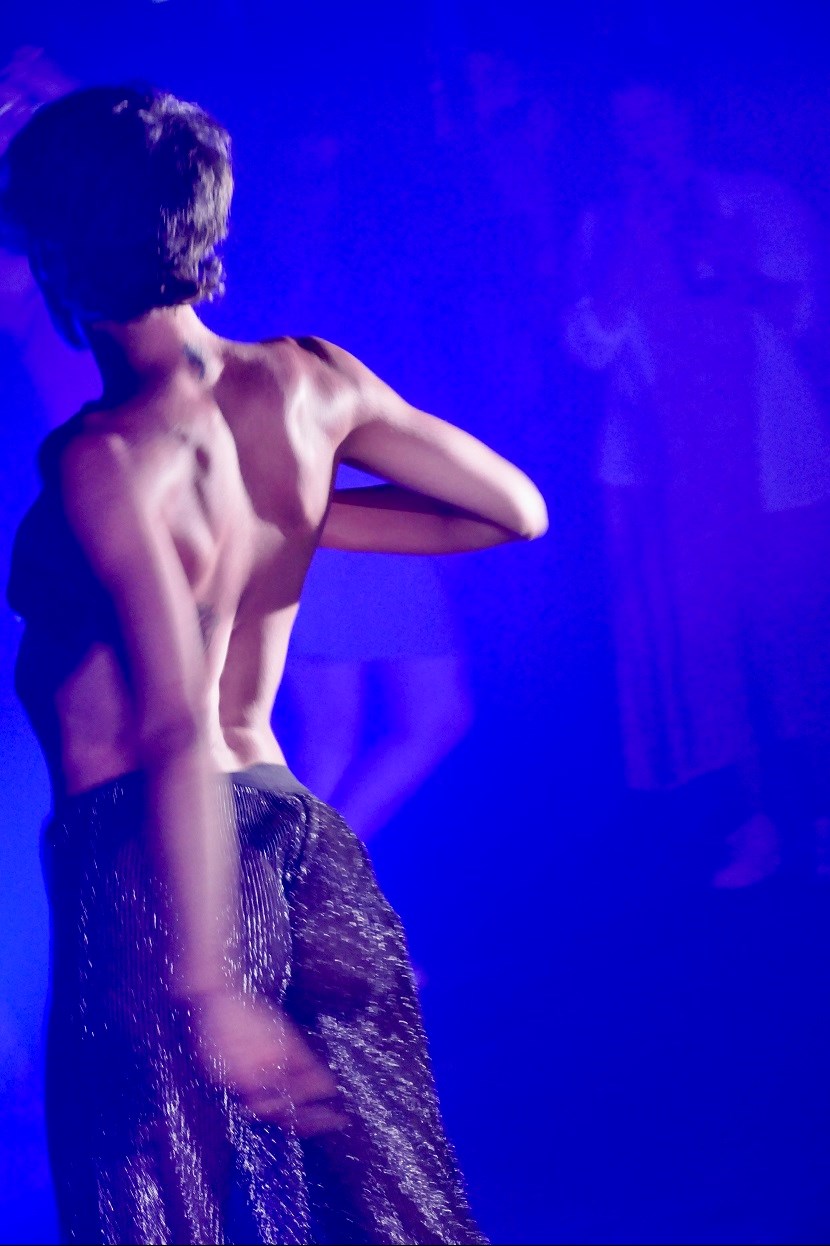
Invisible Columns projected deeply shadowed inner emotionally realms musically into a huge sound space in a mode of purifying confrontation and catharsis. Televizyon was an extrovert joyful affair sharing the pogoing reinvention of echoing vibes of Kalfa’s youthly past. Miraculous Layers was a journey into, across and out of a variety of moods, modals of sounds from poly-cultural sources and inspiration condensed in bold and mind-opening transitions. To capture it in even more abstract way, it was: joy and celebration of our depth of memory, confusion in purification, and conjuring, communion and creational re-calibration.
All three units were initiated via a commission. Invisible Columns was commissioned by NSRT as core of Sanem Kalfa’s residence as Artist in Focus. Miraculous Layers was commissioned by Amsterdam BIMhuis as the first of its Reflex-series. Televizyon was commissioned by Amsterdam S.I.T.P. (SPACE-IS-THE-PLACE) in collaboration with WORM and NSRT in Rotterdam. Miraculous Layers has the longest performance history and is the most well documented: the premiere is documented on BIMhuis Televizyon as well as on an album of BIMhuis Records. The performance here reported, is documented on Dutch InJazz site. The Miraculous Layers performance was part of this year’s International InJazz Meeting, June 21-23, in Amsterdam and Rotterdam and as such loosely associated to the Rotterdam NSRT festival. The concert of Invisible Columns as opening concert of NSRT Festival was also integral part of the annual International InJazz Meeting.
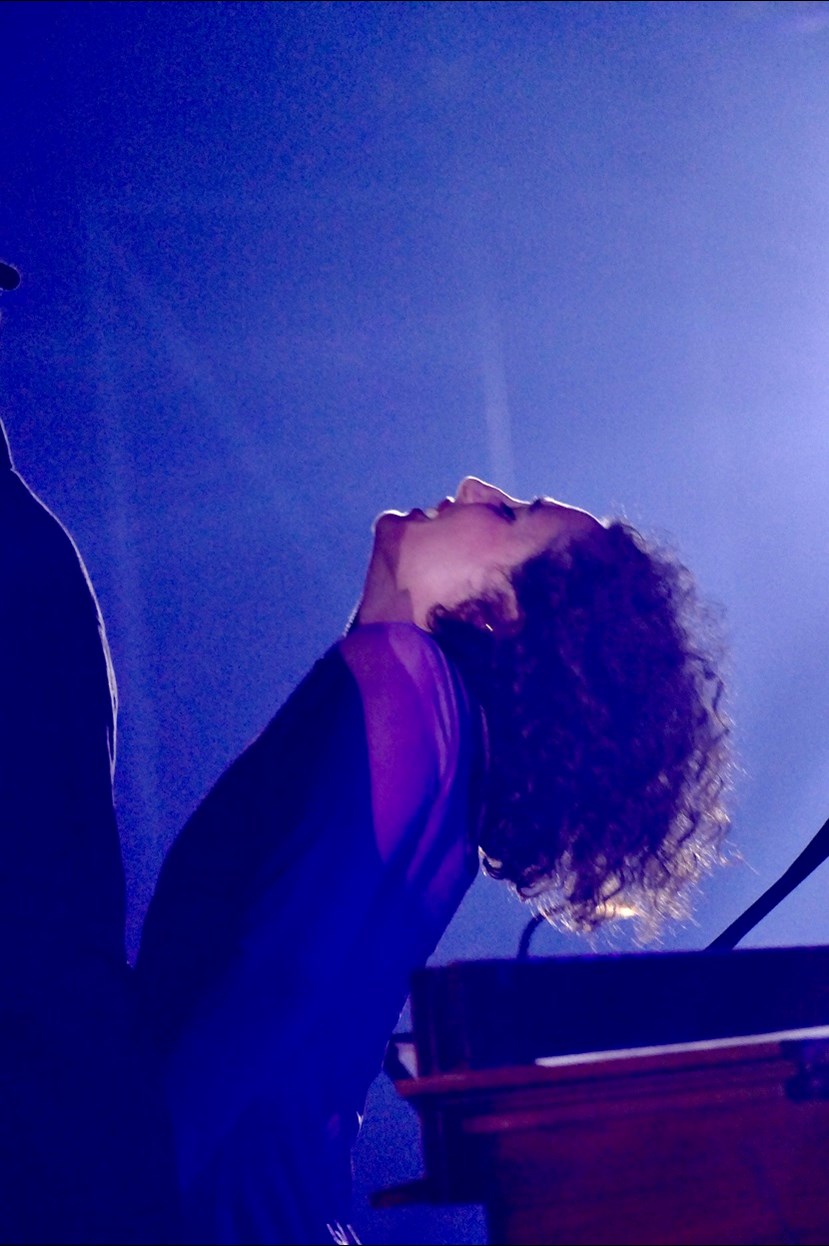
Invisible Columns
INVISIBLE COLUMNS was a vibrating sonic dive into the darker shadow realms of our emotional interior that was projected into the huge exterior reverb space of Rotterdam’s Van Nelle Factory, carried by Kalfa’s boldly sounding, squirming, soul-searching human voice communally with three kindred artistic spirits, Jan Bang (sampler, electronics), Ambrose Akinmusire (tr), Kit Downes (organ) and dancer Alice de Maio (no bass and no drums here), who joined this unusual common trajectory of adjuring existential sonics.

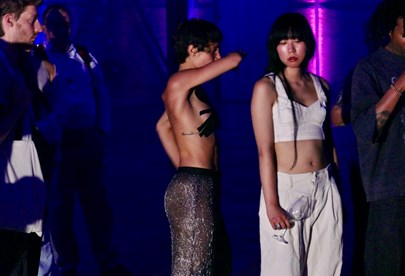
The performance took place in the former distribution centre of the factory, a gigantic space of about 1100 square meters with high ceilings, industrial steel scaffolding and steel shelves along the walls, a rugged industrial ambience dominated by steel girders bathed in misty blue light which induced a strange kind of otherworldly impression: on one hand the misty blue vagueness, on the other hand the tight counterpoint of the steel girders. The columns in the space became vague, not clearly discernible.
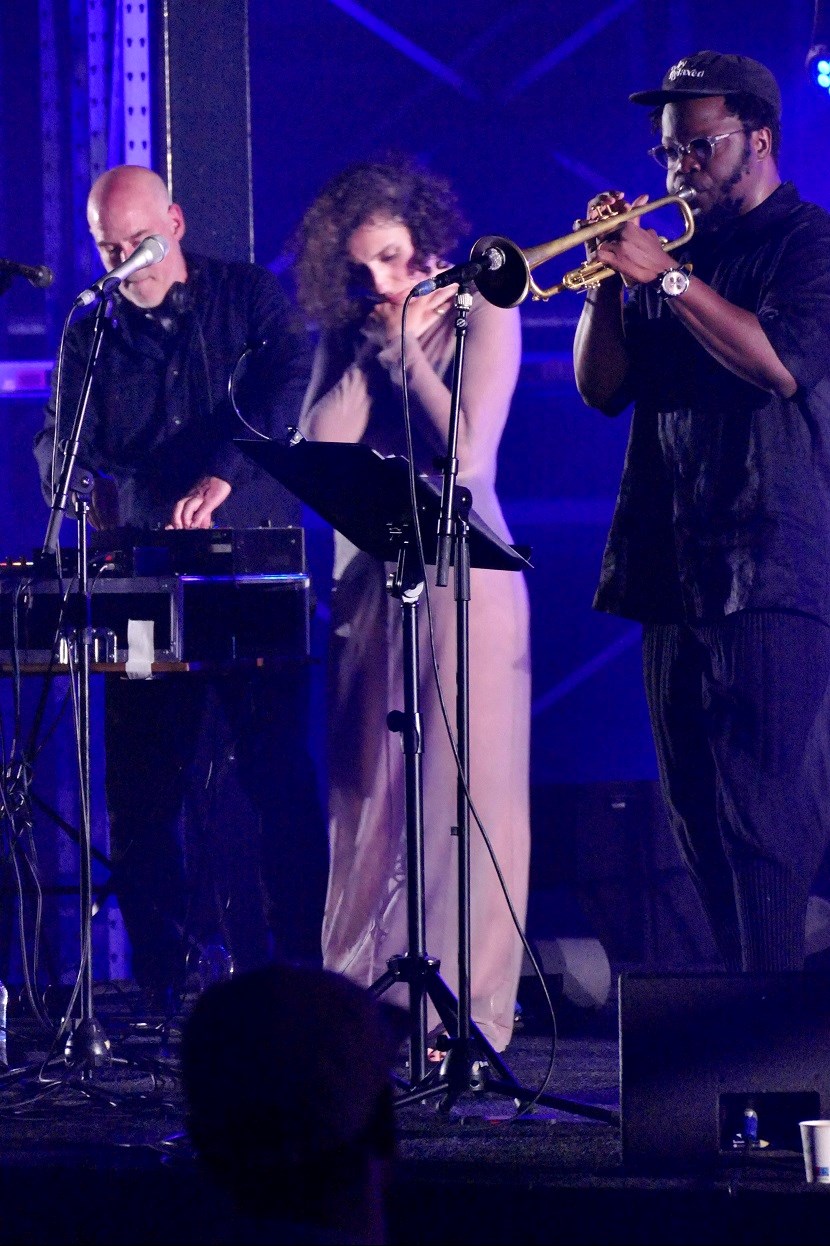
In a juncture of invocations and outpouring personal confessions Kalfa gave shape to life as a process of ongoing metamorphoses and purified resurrections, sometimes as phoenix from the ashes, along outer and deeper inner routes - her individual variation on an ancient theme. The recognisable words functioned like landmarks in and above those deep expressive vocalisms of Kalfa that were drenched in the musical manoeuvres of Bang, Akinmusire, Downes and herself on electronics.
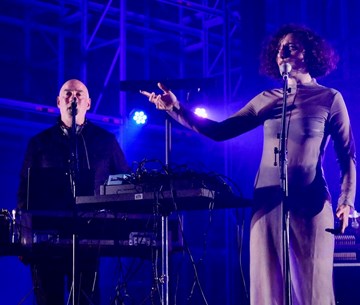

There was no sharply defined starting point. When entering the space you could perceive a video playing and a ghost voice reciting texts. In the rear part of the space you could discern dancer Alice de Maio, snake-like moving between and cutting through groups of standing people of the audience. Through de Maio’s strong and clear presence and her captivating way of acting on bunches of standing people, gradually tense but intangible tableaus emerged of sometimes cinematic quality. This evoked some alienating rapture and faded into the rising musical activity from the stage in front that continued entering the looming terra incognito.
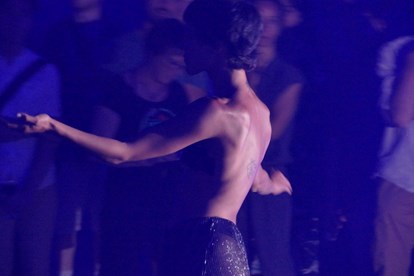
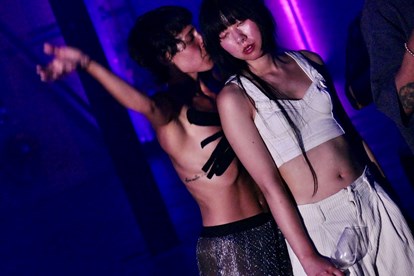
The audience became immersed in dramatic invocation, summoning loops, song-like structures as in the vocal duet of Kalfa and Bang, ambient parts and violent outbursts. The unit created music of mysterious consistency. It drew you in and set you free to linger and wander: it was a drama-loaded passing through a lot of shades of moods and ghost appearances. Kalfa convinced by her strong contextual expressive power. The unit played the whole huge space and created a radiating mysterious coherence with strong subcutaneous effects. The performance was capturing on a diversity of levels without providing a definite resolution.
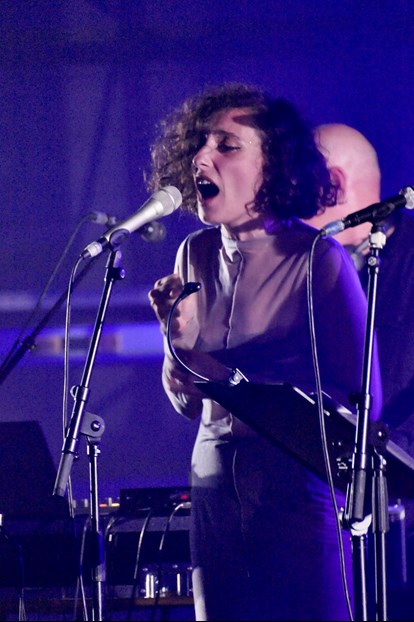
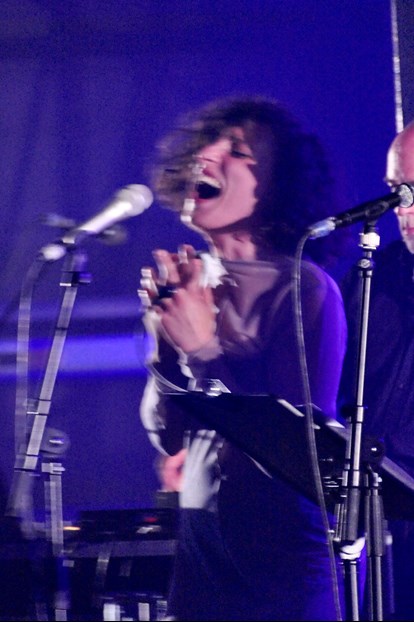
It would have worked even stronger, when there would have been a more sophisticated and dynamic light choreography. Bathing in the same mystic blue created a barrier in the long run. It levelled the expression and began to swallow its power. Moments of complete darkness and white light-spots on acting musicians or the dancer would for sure have increased the dynamics, the drama and its capturing force.
Subversive voice(s)
Music can connect the inner states of people with each other by enabling them to commonly experience a certain flow of energy and vibe, to share a certain mood or flux of shadings or to commonly follow and surrender to certain voice qualities.
Although listening experiences are highly individual, different degrees of communality also can arise. That are processes also virulent on a different level in music making. There are listeners that want to be soothed and confirmed by sound qualities. Others prefer to be lead into and led by more extreme soundings to go through processes of purification and of catharsis. Music normally contains both sides in a specific relationship or has a stronger emphasis on one of these sides.
The images bear witness to the radical expressivity of the group’s concert, especially Kalfa’s whole-body voice in action. Vocal expression evidently is not just a technical question. To extend one’s vocal expression is always connected to going through and surmount emotional and spiritual barriers and have strong emphatic imagination.
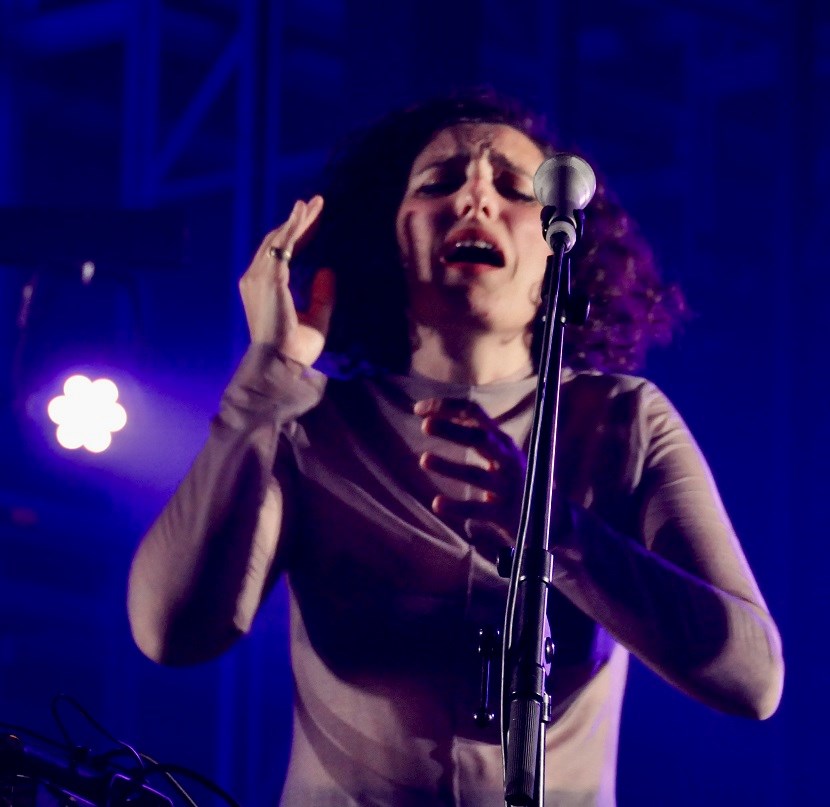
Sanem Kalfa has shown in recent years that she not only has a highly flexible voice with an impressive wide range but also an agile and supple expressive presence in the moment that she fearless and courageously brings it in. She has turned out as vocalist that has less interest in l’art pour l’art voice acrobatics or in beautifying vocals. As an artist she is rather interested in open up distinctive hatches of inner and outer reality in and through the sound of the voice. It is a strong form of vocal interventionism to touch deeper grounds. This way she has developed an artistic profile that made her grow into the direction of these three projects, which are all clearly multidisciplinary.
Kalfa works with the voice as challenging, mind-opening medium but also as subversive medium. It is subversive in the sense that her vocals can go (far) beyond the circled lines, beyond the accepted sonorities, in order to explore, dig up or revive repressed traces of experience. In that sense she is acting in jazz spirit but what she does is going beyond common jazz sonorities.
Like jazz vocalists she expands and stretches songs through improvisation and extended techniques but for her that’s not just a game of finding new sonorities or supply surprise or distorting sounds as an experience in itself. For her it is bound to expression of moving and burning facets of our inner self. Kalfa is proficient in both sides and both sides profit from each other. It’s an aspect of her work that runs through the entire residency program. Many Kalfa’s performances contain traits of music, theatre and performance art but the fruits of these expansion contribute in high measure to the way she interprets a ‘simple song’ like the Abba-songs she sang in rooftop concert in Amsterdam or Brazilian and Italian songs with North Sea String Quartet. It is not the solid food jazz people might expect and thus can get confused or feel repelled. Listeners have to be ready to enter that open field, get involved and take in. Their own listening dramaturgy has to fit to the performance dramaturgy.
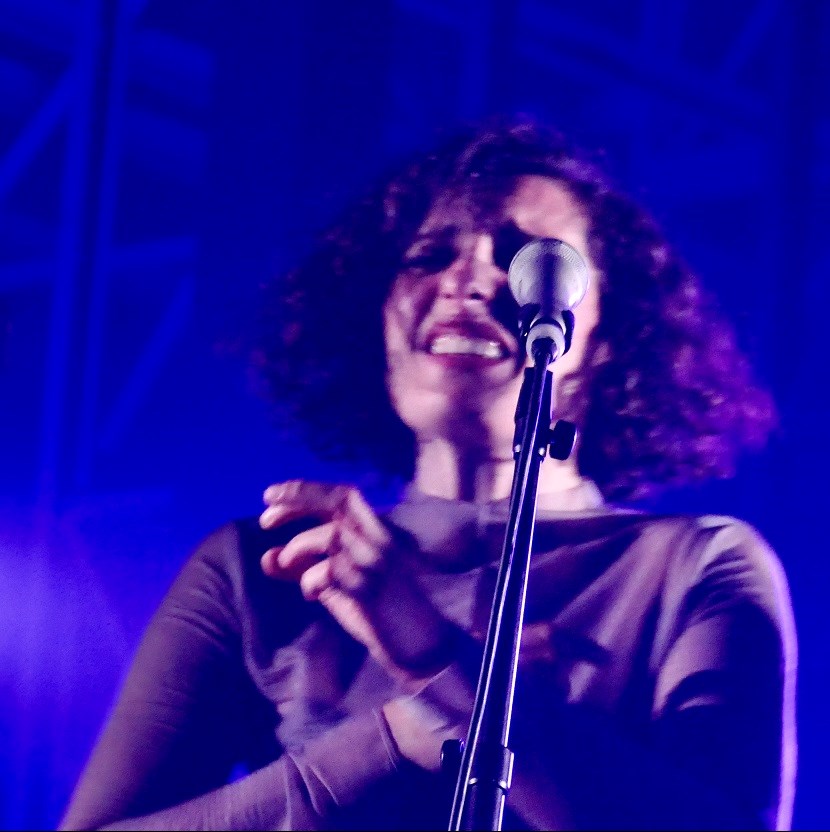
INVISIBLE COLUMNS was a daring step into the described new territory. It sharpened Kalfa’s artistic identity and musical signature in collaboration with internationally established musicians. The quality of the performance calls for further bold actions of that kind of line-up in that same direction, which would be a highly enriching thing for daring (often called ‘adventurous’) programmers.
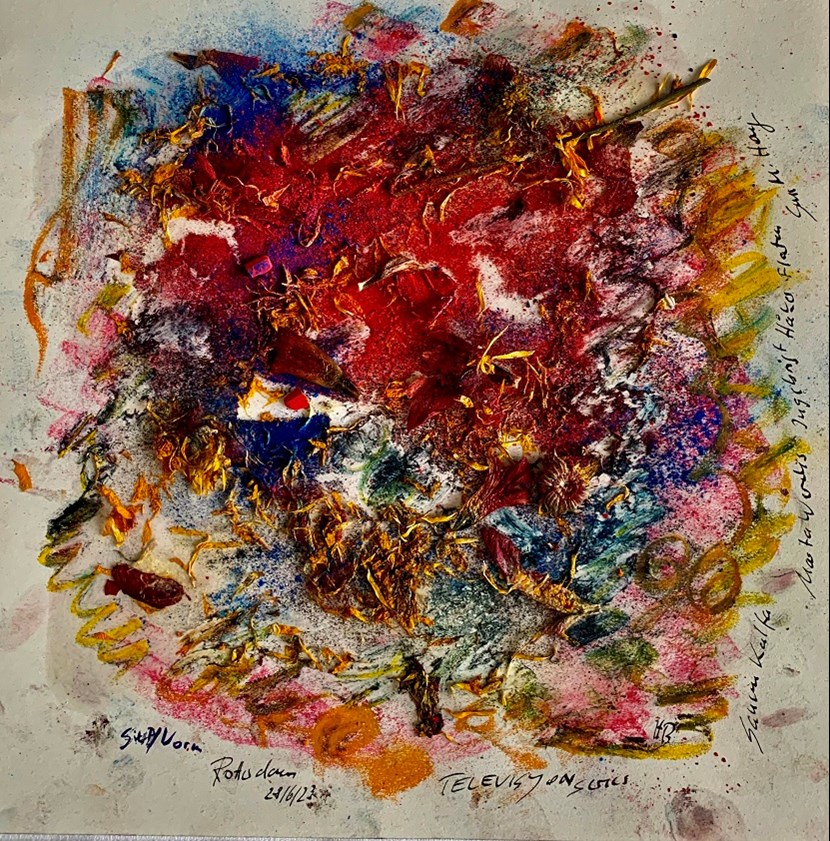
Televizyon
TELEVIZYON was a wild and cheerful affair fed by vibes and far echoes of a growing up amid flickering TV screens and scraps of music scurry by. TELEVIZYON is full of themes and rhythms getting a second life in the here and now: vital, no pastiche, a joyful rebirth in full pogo and galactic scream. The four musicians played their asses off driven up by a welcoming, infected seething, leaping crowd in full surrender. Was it an update of Blondie, of The Pretenders, Eddie Brickell & New Bohemians, 3 Mustaphas 3 ? All and none, these are only triggered memories of mine. Others will have irrepressible others. Yes, it kindled deeper layers of somehow recognisable scenarios and treasures in new light and full swing.
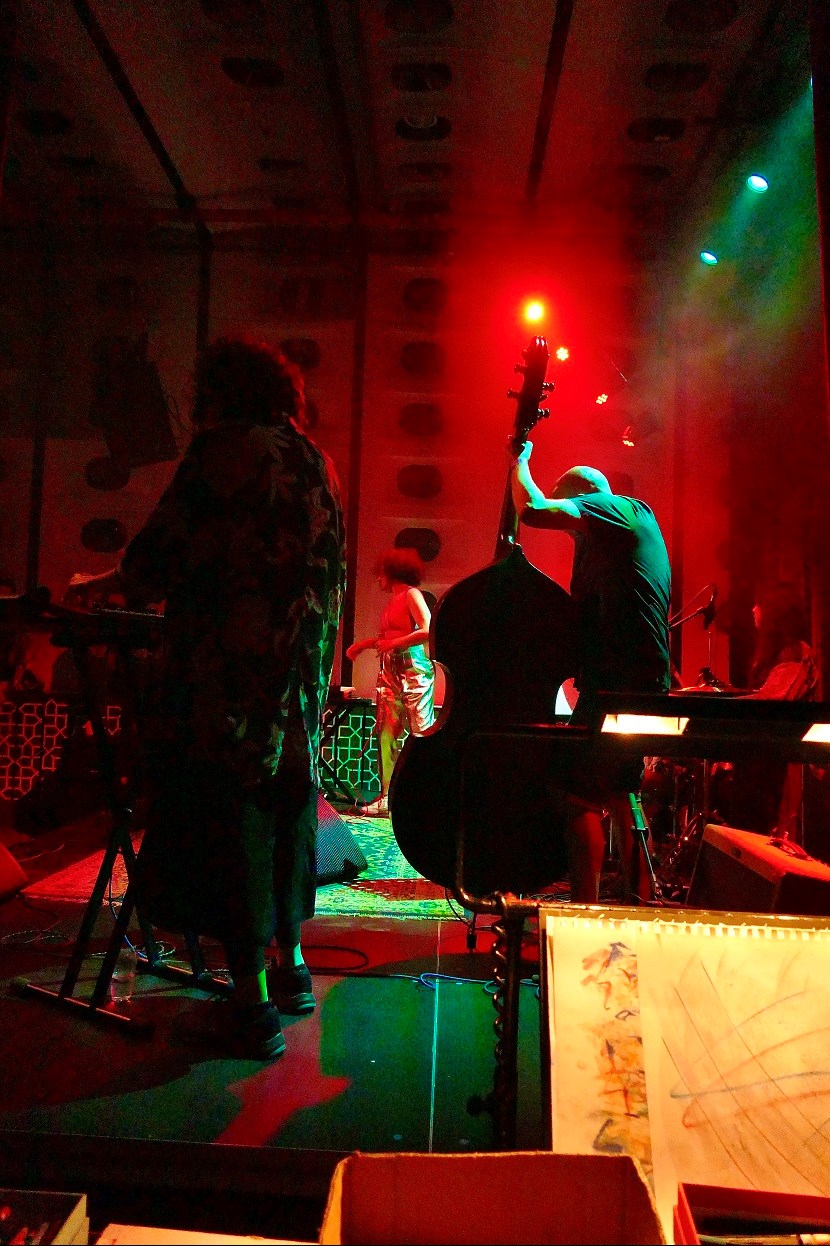
Wonderful how Marta Warelis crazed up her tiny red keyboard, let it whirl, quirl, shriek. Few knew that Sun-Mi Hong can beat it up recta liner like she merciless did, and all relied on Ingebrigt Håker Flaten’s raw anchoring beat and were lifted up by Sanem Kalfa’s curving, titillating, ululating, wondering, embracing and ensnaring voice, her shrieking howlers, joyful freak outs and melodic temptations - dense, heart wrenching and also crazily consistent from a deeper ground.
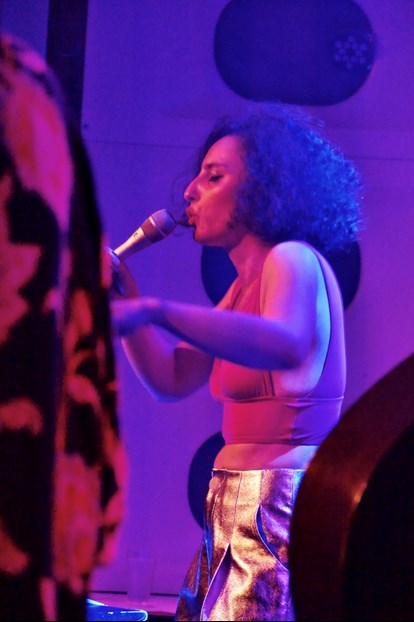
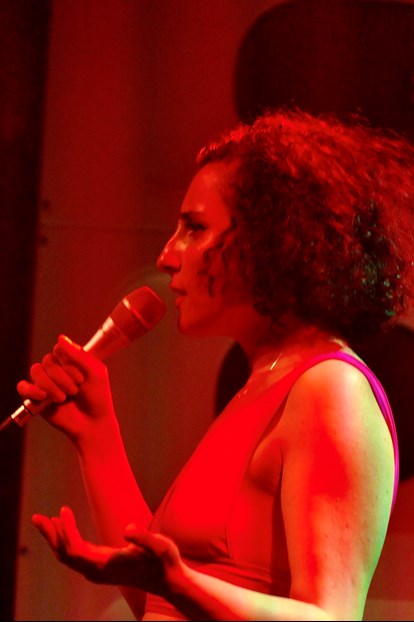
It is wondrous how she effortlessly leads her voice through these sounding valleys, cataracts and serpentines keeping natural lead. It was exuberance with breathtaking height of fall, amazing turns of pitch and toss. It was flying and tying, burning and yearning, running and scrumming. It’s a miracle how she paced through these valleys, cataracts and serpentines of sound and effortlessly kept natural lead. It came a boiling show, the Worm crowd ran crazy and Televizyon blew the roof off.
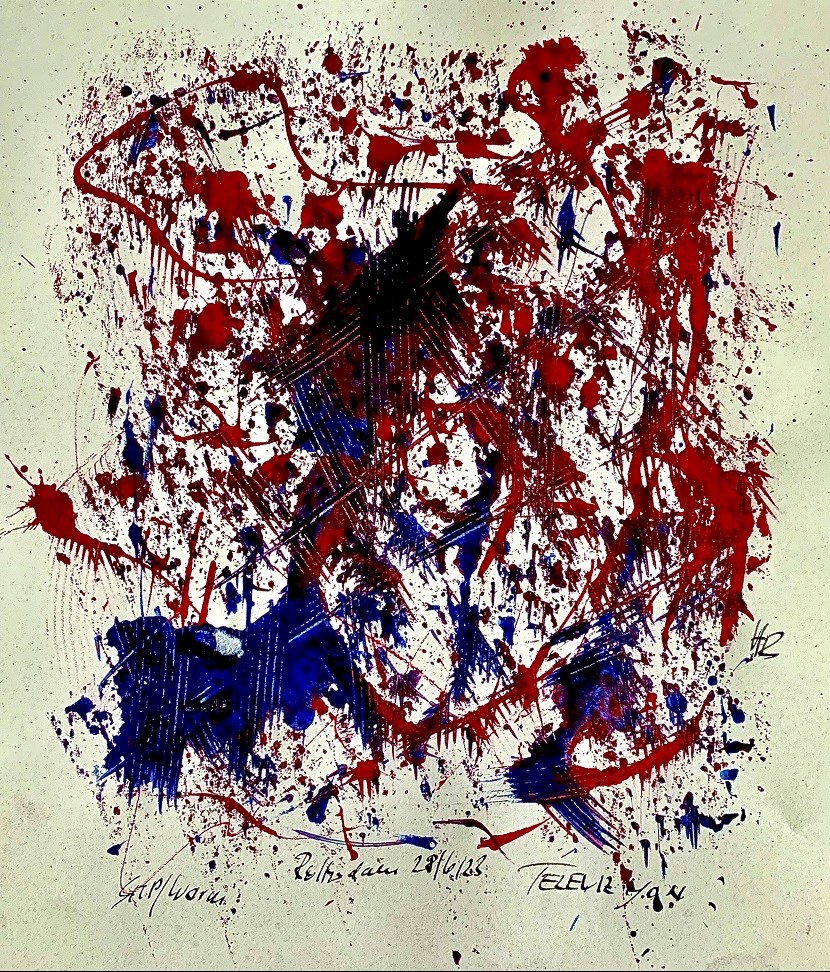
Miraculous Layers
Constituted in the beginning of 2022, Kalfa set the next step for the group and performed in a slightly changed set up and line-up. She acted as only vocalist and played cello plus well-known saxophonist Tineke Postma joined the unit. It turned out as a remarkable performance of great dynamics, full fire, touching depth and exciting transitions. With Kalfa’s intuitive way of leading in open togetherness, in triggering each other, the unit found each other in brilliant ways and created a profound and convincing unification in a flow of heterogenous musical elements. Or, to say it another way: though the concert contained strong catchy tunes, in the concert it never felt as playing of (framed) pieces. The pieces emerged from, ‘were born’ out of, a rich breeding ground in the concert itself (and it led to the tunes continuing to echo and haunt the memory).
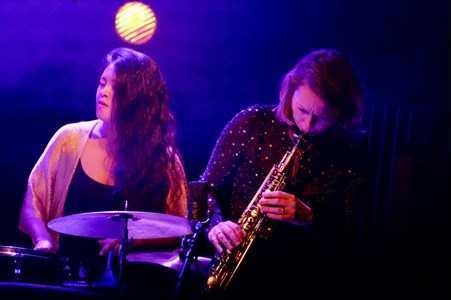
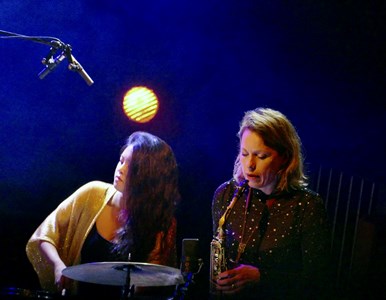
In the concert it worked like the radiant unfolding and full bursting of a bud, revealing more and more surprising details of its interior richness. In snaking through lush vegetation like a liana, lingering at rich bends, prospering branching opened up. It was the dialectical tension between the manner of movement and the forms that manifested themselves time after time what made the unit’s music so fascinatingly infectious. It felt free and open and the same time evidently always hit the right spot intuitively - a greatly satisfying experience and, for those receptive for it, it was exhilarating. It was noticeably permeated with a labour of passion and love. What sets Sanem Kalfa apart too, are the touching expressive gestures connected to her singing. It conveys her heart-felt experience in and through the singing. It makes that the real felt can be felt REAL by the audience.

Fascinatingly Kalfa crosses the realms of and between whispers, cries and deep canto. Free improvisation, radical vocals, driving rhythmic vibrance and poignancy and balladeering emerge from a strong, elegant and passionate undercurrent unifying in a remarkable way. That constitutes something almost non-graspable and just due to it a new enchanting form with its own attracting ether and its challenging secrets. Kalfa not only has an amazingly flexible expressive voice and truthful way of making use of it. Her spontaneous lively dramaturgy and her performance intensity lift it to a higher airy level while it actualises effortlessly and organically with great surrender.
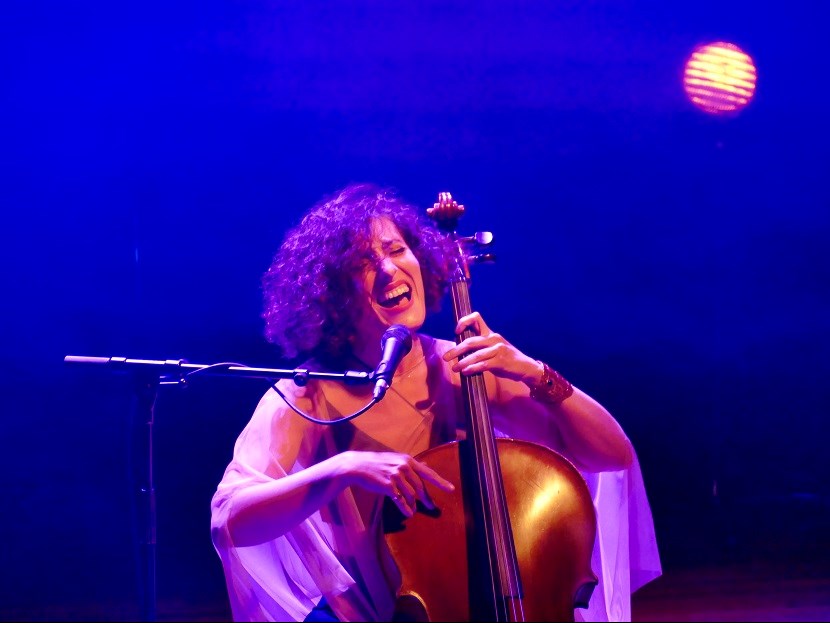
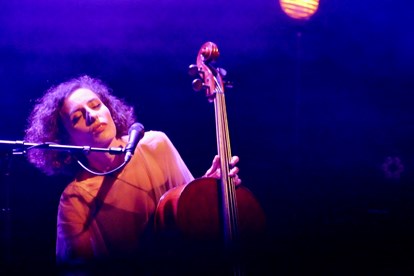
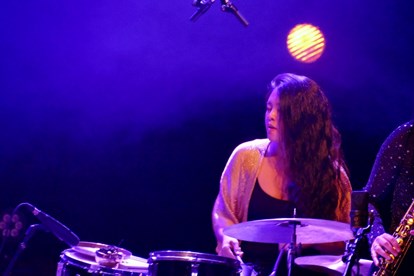
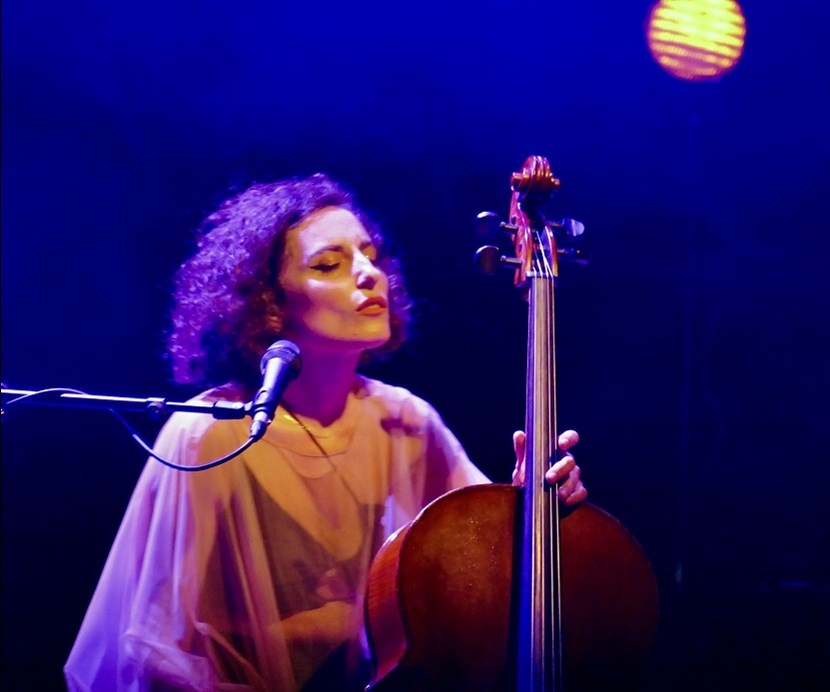
Text & photos © Henning Bolte
Other
In case you LIKE us, please click here:
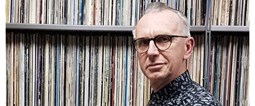
Foto © Leentje Arnouts
"WAGON JAZZ"
cycle d’interviews réalisées
par Georges Tonla Briquet

our partners:
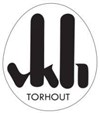


Hotel-Brasserie
Markt 2 - 8820 TORHOUT
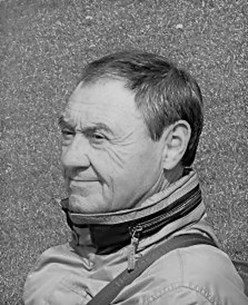
Silvère Mansis
(10.9.1944 - 22.4.2018)
foto © Dirck Brysse
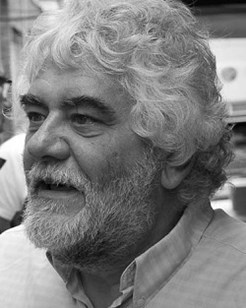
Rik Bevernage
(19.4.1954 - 6.3.2018)
foto © Stefe Jiroflée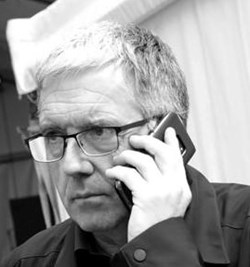
Philippe Schoonbrood
(24.5.1957-30.5.2020)
foto © Dominique Houcmant
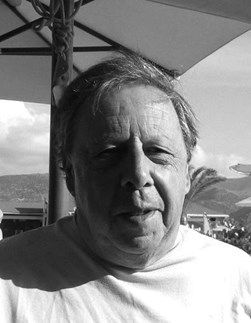
Claude Loxhay
(18/02/1947 – 02/11/2023)
foto © Marie Gilon
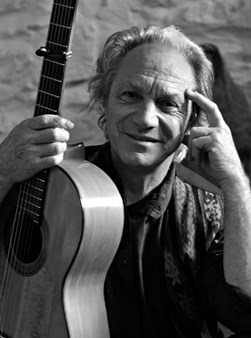
Pedro Soler
(08/06/1938 – 03/08/2024)
foto © Jacky Lepage
Special thanks to our photographers:
Petra Beckers
Ron Beenen
Annie Boedt
Klaas Boelen
Henning Bolte
Serge Braem
Cedric Craps
Luca A. d'Agostino
Christian Deblanc
Philippe De Cleen
Paul De Cloedt
Cindy De Kuyper
Koen Deleu
Ferdinand Dupuis-Panther
Anne Fishburn
Federico Garcia
Jeroen Goddemaer
Robert Hansenne
Serge Heimlich
Dominique Houcmant
Stefe Jiroflée
Herman Klaassen
Philippe Klein
Jos L. Knaepen
Tom Leentjes
Hugo Lefèvre
Jacky Lepage
Olivier Lestoquoit
Eric Malfait
Simas Martinonis
Nina Contini Melis
Anne Panther
France Paquay
Francesca Patella
Quentin Perot
Jean-Jacques Pussiau
Arnold Reyngoudt
Jean Schoubs
Willy Schuyten
Frank Tafuri
Jean-Pierre Tillaert
Tom Vanbesien
Jef Vandebroek
Geert Vandepoele
Guy Van de Poel
Cees van de Ven
Donata van de Ven
Harry van Kesteren
Geert Vanoverschelde
Roger Vantilt
Patrick Van Vlerken
Marie-Anne Ver Eecke
Karine Vergauwen
Frank Verlinden
Jan Vernieuwe
Anders Vranken
Didier Wagner
and to our writers:
Mischa Andriessen
Robin Arends
Marleen Arnouts
Werner Barth
José Bedeur
Henning Bolte
Erik Carrette
Danny De Bock
Denis Desassis
Pierre Dulieu
Ferdinand Dupuis-Panther
Federico Garcia
Paul Godderis
Stephen Godsall
Jean-Pierre Goffin
Claudy Jalet
Chris Joris
Bernard Lefèvre
Mathilde Löffler
Claude Loxhay
Ieva Pakalniškytė
Anne Panther
Etienne Payen
Quentin Perot
Jacques Prouvost
Renato Sclaunich
Yves « JB » Tassin
Herman te Loo
Eric Therer
Georges Tonla Briquet
Henri Vandenberghe
Peter Van De Vijvere
Iwein Van Malderen
Jan Van Stichel
Olivier Verhelst
